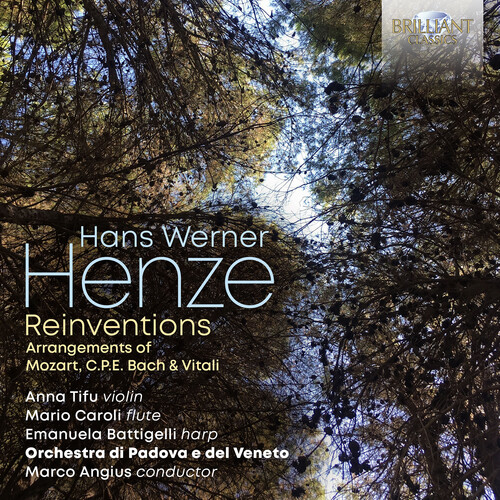Show results for
Deals
- 4K Ultra HD Sale
- Action Sale
- Alternative Rock Sale
- Anime sale
- Award Winners Sale
- Bear Family Sale
- Blu ray Sale
- Blues on Sale
- British Sale
- Classical Music Sale
- Comedy Music Sale
- Comedy Sale
- Country Sale
- Criterion Sale
- Electronic Music sale
- Fantasy Film and TV
- Folk Music Sale
- Hard Rock and Metal Sale
- Horror Sci fi Sale
- Jazz Sale
- Kids and Family Music sale
- Kids and Family Sale
- Metal Sale
- Music Video Sale
- Musicals on Sale
- Mystery Sale
- Naxos Label Sale
- Page to Screen Sale
- Paramount Sale
- Pop and Power Pop
- Rap and Hip Hop Sale
- Reggae Sale
- Rock and Pop Sale
- Rock Legends
- Soul Music Sale
- TV Sale
- TV Sale
- Vinyl on Sale
- War Films and Westerns on Sale

Reinventions Arrangements of Mozart C.P.E. Bach
- Format: CD
- Release Date: 10/27/2023

Reinventions Arrangements of Mozart C.P.E. Bach
- Format: CD
- Release Date: 10/27/2023
- Composers: Hans Werner Henze
- Label: Brilliant Classics
- UPC: 5028421970776
- Item #: 2634221X
- Genre: Classical
- Release Date: 10/27/2023

Product Notes
German composer Hans Werner Henze's (1926-2012) admiration for the great masters of the Baroque and musical Classicism manifested in compositions born from a desire to transcribe, rework and transform 17th- and 18th-century masterpieces into new orchestral textures. The project Travestimenti (Disguises), managed by conductor Marco Angius and the Orchestra di Padova e del Veneto, from which this CD was created, makes reference to Henze's 'reinventions' of masterpieces by Mozart, C.P.E. Bach and Vitali, clothed in new, modern fashion. For the Drei Mozart'sche Orgelsonaten, Henze takes up three of Mozart's one-movement Kirchensonaten (church sonatas or trio sonatas). Sonatas 17 and 15 are in an Allegro tempo, whereas the Sonata K.67 is marked Andantino, so Henze, in his transcription, places the latter between the two livelier tempos, thus reconstructing the tripartite structure of a classical three-movement sonata. Scored for an ensemble of 14 players that includes the less common, softer variants oboe d'amore and viola d'amore, it aims to underline the darker instrumental timbres, favouring the sombre sonorities of the alto flute in G, the bass flute in C, the bass clarinet and the bassoon. During the last year of his life, in 1787, Carl Philipp Emanuel Bach composed a Fantasia libera per tastiera sola (Free Fantasia for keyboard alone) which he expanded into the Clavier-Fantasie mit Begleitung einer Violine (Fantasy for harpsichord with violin accompaniment), one of his most personal and expressive works. Henze transcribed it for solo flute, harp and strings, aiming to project the extremely interesting and expressive harmonic material of the composition into a larger instrumental apparatus, thus making it's future-oriented harmonic structures more manifest and moulded. He proposed two options for division of the: string quartet + string quintet or string quartet + tutti (the latter version is recorded here). Although it was probably composed in the early 18th century, Vitali's Ciaccona 'Il Vitalino' - whose musical form is inspired by dance and consists of variations on a ground bass - was only rediscovered in 1867, published by the German virtuoso violinist Ferdinand David. Henze's Il Vitalino raddoppiato - called "raddoppiato" ("doubled") because of his extension of the composition by means of interpolated variations of each original section in the style of 18th-century doubles - retains Vitali's bass almost throughout the entire composition. It alternates Vitali's variations on his chaconne theme with Henze's variations of Vitali's variations, in an ever-changing dialogue between the 18th-century past and Henze's present.

